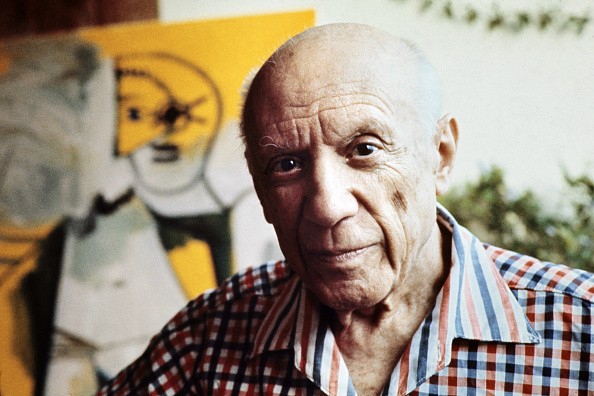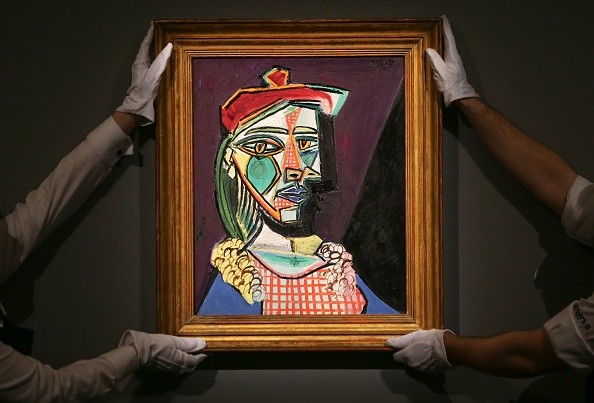Artificial intelligence has once again restored another lost piece of art. And this art is from the legendary Pablo Picasso, no less.
But by "lost," however, we mean "buried deep within." That's because the Pablo Picasso painting, which is nude, is concealed underneath another layer of paint in his work titled "The Bling Man's Meal."

This file pictured dated 13 October 1971 shows Spanish painter Pablo Picasso in Mougins, France. The town of Guernica will commemorate next 26 April 2007 the 70th anniversary of the 1937 bombing by planes of the German Luftwaffe "Condor Legion" and subordinate Italian Fascists from the Corpo Truppe Volontarie expeditionary force during the Spanish Civil War which resulted in widespread destruction and civilian death.
After being first detected by X-rays in 2010, the painting called "The Lonesome Crouching Nude" was recreated using an artificial intelligence algorithm trained in Picasso's unique art style, reports CNET.
To achieve the recreation, the artificial intelligence was purportedly trained on "dozens" of Picasso's paintings, which was facilitated by researchers from University College London.
Here is a video showcasing the recreation:
XRF imaging and image processing software was used to build a so-called "skeleton" for the painting. Then, virtual brushstrokes were applied, mimicking Picasso's very unique style with the help of artificial intelligence.
The company in charge of this was a tech startup called Oxia Palus, which specializes in restoring/recovering lost art pieces, reports CreativeBloq.
As of this writing, the work is being shown at an AI art fair called Deeep in London until October 17th. The art fair has an official Instagram account called deeep_artfair.
Read Also: The Benefits of Artificial Intelligence in Our Day to Day Lives
Artificial Intelligence Mimicking Picasso? How Is That Possible?
If you have a good idea about Pablo Picasso's art, you'll know that his style is extremely one-of-a-kind. And that's what made him one of the most iconic painters in history.
So, how is artificial intelligence able to "copy" his style?

Gallery assistants hold an artwork by Spanish artist Pablo Picasso entitled 'Femme au beret et a la robe quadrillee' (Marie-Therese Walter) with an estimate price in the region of 35 million pounds, (50 million dollars), during a photocall at Sotheby's in central London on February 22, 2018.
It's all about how AI is built in the first place. The algorithm itself used machine learning technology to "study" the style of Picasso's artworks, and from there, it made its "own" educational guess.
This is what separates artificial intelligence from human intelligence. AI, using machine learning, "learns" in a distinct, one-dimensional way: if you feed it a certain amount of data. Without all of those previous Picasso paintings to draw on, the algorithm likely wouldn't achieve anything substantial.
But as Ty Murphy, an expert on Picasso's art, says, a human expert can still recognize that the recreation is not an original, writes CNN. That's where the limits of this technology lie.
However, Murphy himself did say that with time, artificial intelligence can improve enough to make art recreations "very convincing."
Not The First 'Artsy' Rodeo For AI
This isn't the first time that artificial intelligence was tasked to recreate a lost work of art. In fact, Google themselves used one to restore a series of paintings by the Austrian artist Gustav Klimt, all of which were destroyed by the German army during WW2.
These art pieces had their originals burn down in a fire but were photographed in black and white before that happened. The Google algorithm managed to recreate the paintings in color using data from Klimt's other works, and they're now displaying them on the Google Arts & Culture website for all to see.
Related Article: 'Free Guy' Artificial Intelligence: Can Tech Like This Actually Exist?
This article is owned by Tech Times
Written by RJ Pierce













